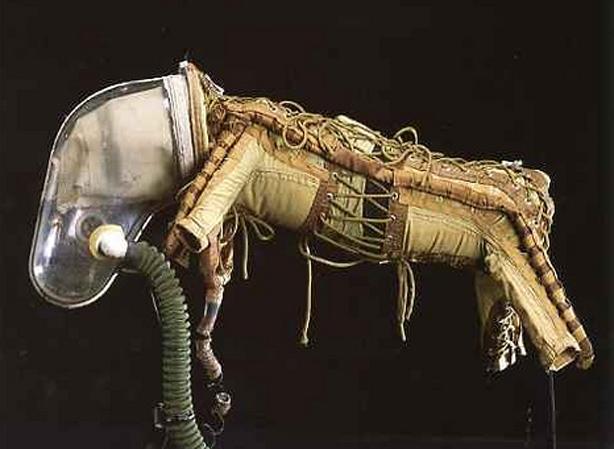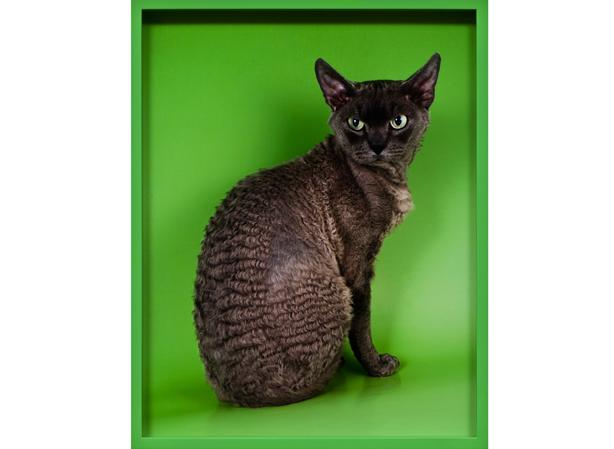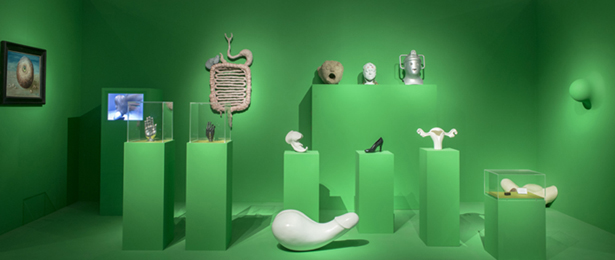from Nottingham Contemporary:
Turner Prize-winning artist Mark Leckey has curated an exhibition that explores the magical world of new technology, as well as tracing its connections to the beliefs of our distant past.
Historical and contemporary works of art, videos, machines, archaeological artefacts and iconic objects, like the giant inflatable cartoon figure of Felix the Cat – the first image ever transmitted on TV – inhabit an “enchanted landscape” created in Nottingham Contemporary’s galleries, where objects seem to be communicating with each other and with us.
In Leckey’s exhibition “magic is literally in the air.” It reflects on a world where technology can bring inanimate “things” to life. Where websites predict what we want, we can ask our mobile phones for directions and smart fridges suggest recipes, count calories and even switch on the oven. By digitising objects, it can also make them “disappear” from the material world, re-emerging in any place or era.

Laika’s suit
from e-flux:
“I think of this show as a work of fiction: a non-realist, anti-realist, magic-realist, speculative, slipstream fiction, a sort of sci-fi show. An inflation or amplification of the way the world appears to me now, a shape of ‘things’ to come. As it seems to me, the further technology evolves the more our minds devolve back to the imaginings of our superstitious past. Call it an animistic future or techno-atavism. The Universal Addressability of Dumb Things is a world beyond tomorrow when every ordinary, unthinking object—tinned meat, refrigerators, paving stones—becomes an active participant in the Great Connection. Now I already find objects bewitching as they endow blessings and inflict punishments on me every day. And technology seems only to be increasing their supernatural potency as I sit in front of my machine and with a touch my wishes are made manifest. The mental gets materialized.
“So let’s say that all the objects in the show have already communicated with each other and they’ve called themselves together. They’ve formed a Parliament with representatives from the Vegetable World, Animal Kingdom, Mankind and the Technological Domain. And the breadth of that assembly is contained within its two hands: a Medieval reliquary and a bionic limb. Everything from one hand to the other is equal in aspect, with no distinctions drawn between, whether it is organic or inorganic, from the past or the present, whether it’s imagined or real. The full figure of Sputnik continually girdles the earth as the Giant of Cerne Abbas stares forever up to the stars and the stars keep staring back.”
–Mark Leckey
The Universal Addressability of Dumb Things is the latest in a series of acclaimed artist-curated Hayward Touring exhibitions. It includes work by the artists William Blake, Louise Bourgeois, Prunella Clough, Peter Coffin, Martin Creed, John Gerrard, Robert Gober, Richard Hamilton, Nicola Hicks, Roger Hiorns, Andy Holden, Elad Lassry, Pierre Molinier, Jonathan Monk, Mick Peter, Richard Prince, Jim Shaw and Tøyen, amongst others.
It also features marvels and artefacts such as a mummified cat and canopic jar from Pharaonic Egypt, a phallic sculpture from A Clockwork Orange, a mandrake root, a drawing by ‘Joey the Mechanical Boy,’ the helmet of a Cyberman from Dr. Who, a giant inflatable Felix the Cat, a 13th-century silver reliquary in the form of a hand and a clay concept car. The Universal Addressability of Dumb Things expands on Leckey’s practice of exploring the tenuous boundaries between the virtual and real worlds by creating a network of objects that communicate with each other and the visitor. Read this way, it could also be considered his most ambitious exhibition to date.
Mark Leckey lives in London and was born in Birkenhead in 1964. He won the Turner Prize in 2008. The Universal Addressability of Dumb Things opened at the Bluecoat in Liverpool and will be presented at The De La Warr Pavlion in Bexhill-on-Sea from 13 July.






